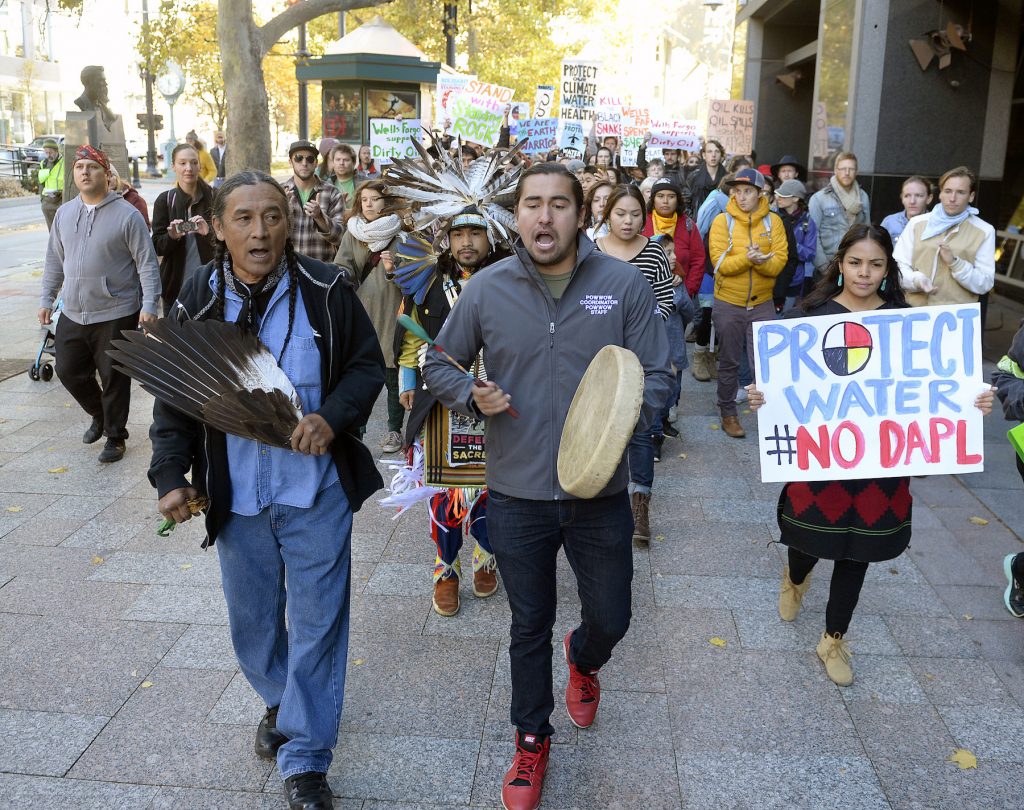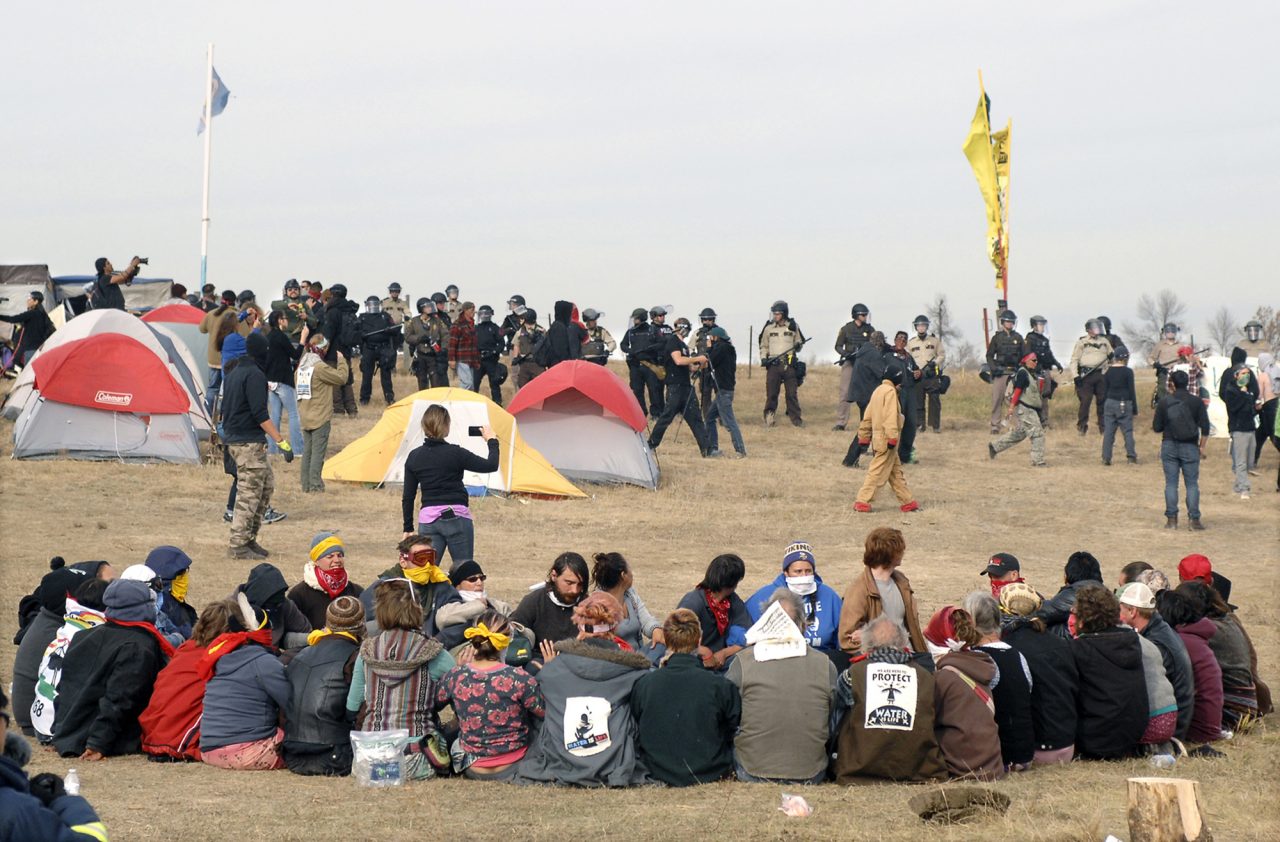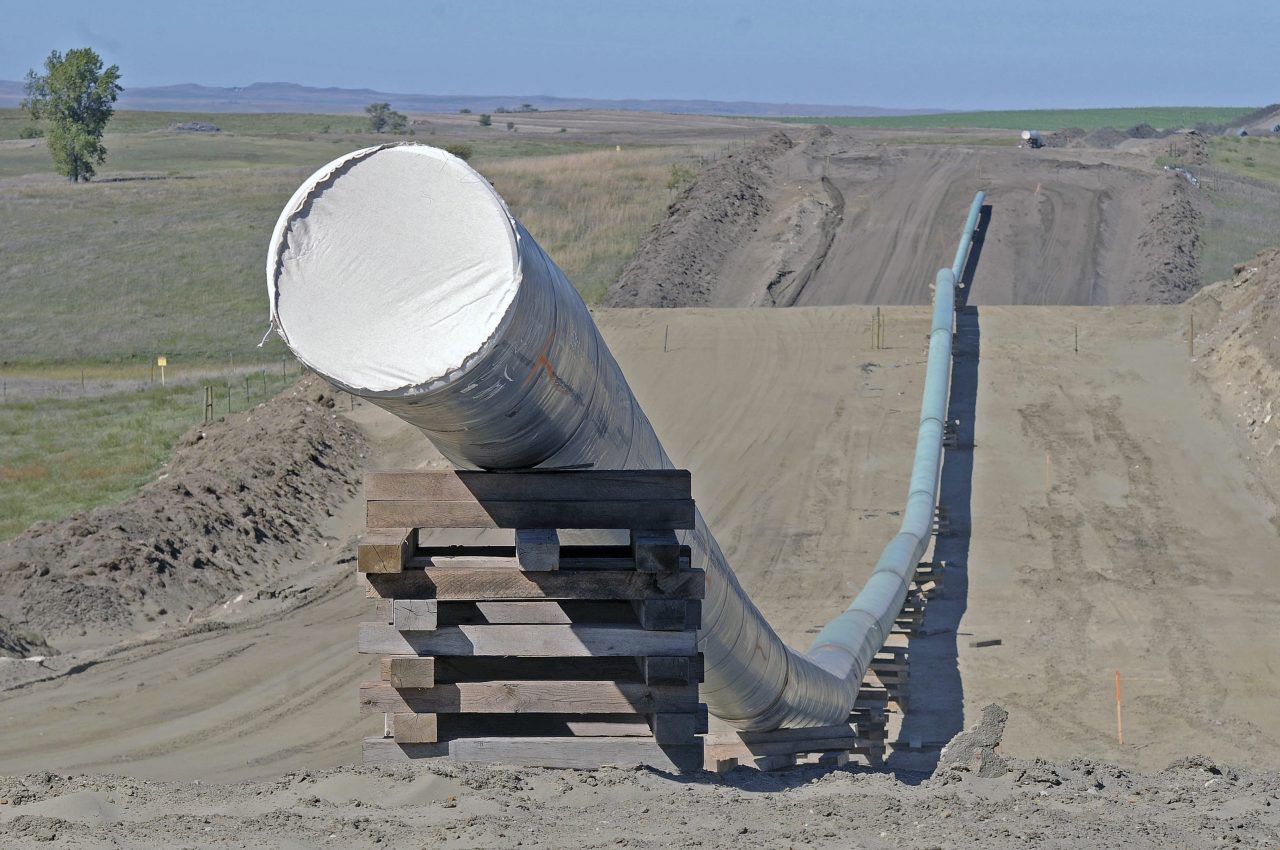
What’s the #NoDAPL hashtag all about?
You may have noticed some of your Facebook friends appear in a remote corner of North Dakota yesterday. They're showing solidarity for the Native American community in North Dakota who are protesting the construction of a pipeline near their lands. Here's the lowdown.
What’s going on?
A Texan energy company is trying to build an oil pipeline known as the ‘Dakota Access Pipeline’ between North Dakota and Illinois. But the pipeline passes right by the Standing Rock Indian reservation in North Dakota, and some of the residents of Standing Rock think it will threaten their water supply and disturb sacred burial grounds. They’ve been actively protesting the pipeline for a few months now, joined by other Native Americans and environmentalist groups from around the country.
The Native Americans at Standing Rock aren’t the first ones to be unhappy with the pipeline. Over two year ago, farmers in Iowa fought against having to sell parts of their land to build the pipeline. But clashes between opponents of the pipeline and police have brought more attention to the issue in recent days. The pipeline is also pretty close to being finished; the original plan was to have it done by Halloween.
A Facebook campaign trending yesterday urged users to ‘check in’ to Standing Rock to confuse police who may be tracking people attending the protests. Over a million people took part, so if your friends seemed to be teleporting to the Peace Garden State yesterday, that’s what was going on.
So why build a massive pipeline there?
North Dakota is a pretty out of the way place (their state tourism strategy is partly based on encouraging people to ‘see all 50 states’ so they’ll eventually come to North Dakota).
Fracking, a controversial way to cheaply extract oil in places where drilling used to be much more difficult – like North Dakota – has created a huge boom in the state's oil production. While the rest of the country was struggling to come back from the recession, some parts of North Dakota had rates under 1% because of jobs created by fracking. They currently have the third lowest unemployment rate in the country at 3%.
But the boom has also caused a ton of problems. For instance, North Dakota is pumping a lot more oil, but it doesn’t have new ways of getting that oil to the rest of the country other than rail, which is expensive. The pipeline is an opportunity to transport it faster, and make some money.
Pipeline supporters are also arguing that the pipeline will have all kinds of spillover benefits, or , that would make it great for everyone. Here’s a few things they say it’ll do:
- Create a bunch of temporary construction jobs and a few long term jobs
- Contribute to local property taxes
- Help the country use less foreign oil by making it easier and cheaper to use oil from North Dakota
- Protect the environment, as oil pipelines might be safer than moving oil on trains

Why do some people not want the pipeline?
Some aren’t quite convinced. Firstly, they fear a spill or leak from the pipeline could damage the local water supply. The proposed route for the pipeline crosses the Missouri River, which is an important source of water for the entire region. Pipeline accidents are not uncommon—just yesterday there was a deadly pipeline explosion in Alabama. Many of people trying to stop the pipeline have asked to be called ‘water protectors’ as opposed to ‘protesters’.
“Many of people trying to stop the pipeline have asked to be called ‘water protectors’ as opposed to ‘protesters’. ”
Then there’s the land rights issue. The pipeline will pass very close to the the land officially recognized as the Standing Rock Indian Reservation – so close that it might infringe on sacred tribal burial sites.
Some people are unhappy with the idea of building big pipelines in general. Lowering prices for oil transport will only encourage people to use more oil, making cleaner alternatives like wind or solar less attractive Environmentalists used to spend a lot of time trying to get the government to regulate fossil fuel use, but recently they’ve shifted to trying to stop big infrastructure projects one-by-one. That’s partly what the big fight over the Keystone XL pipeline was about, and it’s in play again here.
Why does it matter that so many of the pipeline’s opponents are Native Americans?
Native Americans are one of the most disadvantaged groups in the American economy. Over 28% of Native American’s live in poverty (the national average is 15.5%). The poverty rate on the Standing Rock Sioux Reservation, where the protests are taking place, is over 40%.
Plans to place the pipeline closer to the more populated (and richer) city of Bismarck were scrapped in favor of the current route next to the Standing Rock Reservation. It’s not the first time that companies, or governments, have chosen to build a big project that might have negative local effects in an area where people are already worse off. Critics call this environmental racism.
Plus, some are challenging the pipeline in court on the grounds that the government didn’t abide by the political rights that Native Americans have been granted in light of the brutal history between their communities and the US government – one of them being to give residents extra notice of significant infrastructural projects in their region. It’s not entirely clear if the government did this, , so construction near the Missouri river has been temporarily stopped.
What happens now?
The pipeline company is currently racing to get the pipeline as close to the Missouri river as they legally can. Part of the hope is that it will be harder to stop a thousand mile project that is only a few miles from completion. The opponents of the pipeline in North Dakota are settling in for winter and preparing for a ‘last stand’ to keep the pipeline from crossing the river. Stay tuned.




